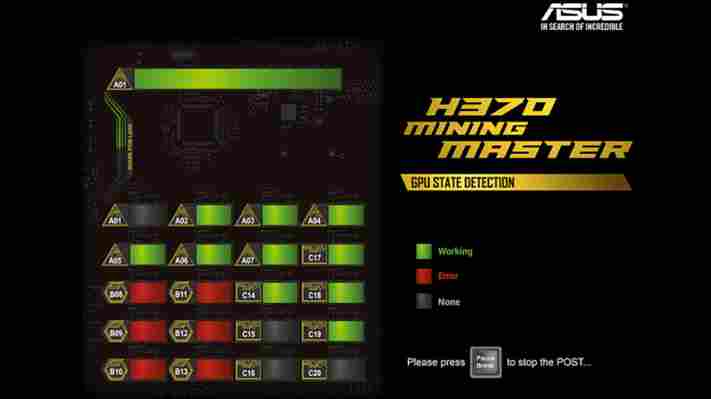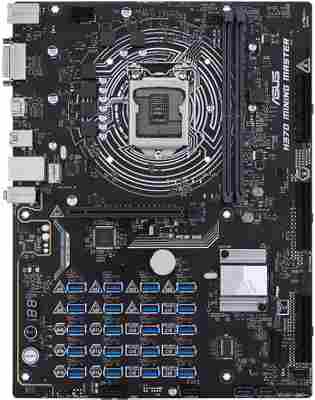Futures contracts could turn Bitcoin into a zero-sum game
In Greek mythology, the Titan, Prometheus, brought fire to mankind against the will of the supreme Olympian god, Zeus. As a punishment for divulging the divine secret, Prometheus was chained to a Caucasian Mountain for all eternity, visited only by a vulture that would come every day to nibble at the Fire-Bringer’s liver, which then promptly regenerated, only to be feasted upon again and again by the ever-hungry scavenger.

Bitcoin might be likened to Prometheus in that it brought the seed of a new kind of monetary system to humanity, which hitherto had been living under the reign of the capricious Gods of Money. But just like the insurrectionary immortal Prometheus, Bitcoin might come to incur the wrath of those select few whose jealously guarded prerogatives are being threatened.
While it takes chains forged by crafty Hephaistos himself to bind a Titan, what could possibly quell an unleashed cryptocurrency? With futures contracts, the moneyed Olympians might just have the right tool at their disposal to permanently suppress the price of Bitcoin.
Bitcoin futures
In the run-up to the release of the much-anticipated Bitcoin futures listed by Cboe and CME – two of the biggest commodities exchanges in the world – it was widely suggested in the media that the arrival of such a financial instrument would have an adverse effect on the Bitcoin price. Namely, because the contract design of the futures derivative allowed investors to make money off their bearish market expectations by assuming short positions on the sell side of the contract, without even being required to own any Bitcoin as the underlying asset of the contract.
The Cboe futures went live on December 12 and the CME futures launched on December 17. Lo’ and behold! Shortly after that, on Friday, December 22, Bitcoin experienced a major correction, shedding almost one-third of its value and dropping from an all-time high of almost $20,000 to as low as $11,970. By the second week of January, Bitcoin rebounded to $15,753. As of January 22, the price has plunged again and remains at a fragile $10,005.
As Charlie Shrem pointed out, there is a precedent for a heavy dip around New Year in Bitcoin’s history. Also, a look at the long-term chart seemed to suggest that the overall upward trend of Bitcoin is set to continue. The recent market correction, according to this interpretation, should not be construed as an irregularity, but rather as a natural swing of the pendulum in a sustained climb of Bitcoin’s value. However, as of late January, the Bitcoin price has not boomeranged back to pre-dip heights. What if, this time, the price depression has become a chronic ailment?
What should give everyone a moment to pause is the realization that, due to growing altcoin popularity, Bitcoin no longer accounts for the uncontested lion’s share of the overall crypto market cap. As of early January, Bitcoin dropped as low as 36% of the combined market cap. While still being in pole position in terms of the single market cap, Bitcoin now has an unlikely pursuer: Ripple, an unmined “bank” coin with cozy relationships to the institutional banking system.
A lot of money has flown out of Bitcoin and poured into a plethora of altcoins, with satirical “meme-coins”, such as Dogecoin, reaching a market cap of almost $2 billion. Public interest in cryptocurrency is at boiling point, yet the allure of Bitcoin has somewhat faded. People have lost faith in the proto-coin. How could Bitcoin futures possibly play into this?
A zero-sum game?
Futures are a type of contract that obliges the agreeing parties to deliver – or, conversely, accept delivery – of a fixed quantity of a commodity at a future date for a predetermined price. The buyer is “long”, the seller is “short”. For the settlement of the contract, the initially agreed-upon price of the asset will be contrasted to the price of the asset determined around the time of contract maturation.
Futures are a zero-sum game: In the end, there will be a winner and a loser. The long position, i the buyer, will benefit from an increase in price. That is because his or her long position can be understood as a legal title to obtain the commodity at a lower price compared to the now prevailing market conditions, which effectively make procurement of the commodity on the spot market costlier than insisting on contract fulfillment according to the more favorable terms of the futures contract.
Everyone else – except those long on the futures contract – have to pay more in the spot market to get their hands on the commodity. If the price increases, the buy side of the futures contract stands to benefit.
Vice versa, if the price drops, the sell side has an advantage, as the futures contract concluded at the previously higher price may now be thought of as a securitized entitlement to sell at a price better than the current market level. The traders short on the futures contract can sell at a more profitable price than all the other sellers, who must accept the lowered spot market price should they choose to monetize at this very moment the commodity they are sitting on.
To sum up, a price drop will make a futures contract more valuable – if you are short on the futures contract. An increase in price will make a futures contract more valuable – if you are long on the futures contract. In each of these scenarios, the opposite side of the contract suffers losses equivalent to profits of the party that correctly anticipates the future price movement.
A parallel investment universe
The exchange, on which the futures are traded, ensures that the gains and losses are properly allocated to the market participants so that the balance reflects who made the right bet and who made the wrong bet. In between the exchange and the broker-represented clients, the clearing houses are nested as guarantors to ensure that the scores are settled in the event a market participant is unable to pay his debt.
Most futures these days, including Bitcoin futures, are financially settled rather than being actually delivered. This means that in order to go short on Bitcoin, you are not obliged to deposit the amount of Bitcoin you have wagered on. Rather, you have to meet certain margin requirements in cash holdings that reflect a percentage of the nominal value of the futures contract. The CME Bitcoin futures market, for example, has a volume of 5 BTC and a margin requirement of 43 %. At a Bitcoin price of, say, $15000, you would thus need to make a cash deposit of 5*15000*0.43 = $32250. The Cboe futures market only represents 1 BTC, making it more suitable for smaller investors.
Ever since the release of Bitcoin futures, having exposure to Bitcoin is no longer tied to pumping money into the Bitcoin ecosystem. The price of something is a cumulative effect of many individual transactions. There are stable and unstable prices. Bitcoin, up until now, fell squarely into the latter category, albeit with an overall upward trend in terms of price directionality.
The availability of Bitcoin-centric futures opens up a parallel investment universe that absorbs cash that would otherwise have ended up on Bitcoin exchanges. While the arrival of Bitcoin futures was widely touted as a sign of mainstream acceptance, the exact opposite might be true. Futures contracts could be the chains that turn Bitcoin into a hostage market.
In commodities markets such as oil and gold, futures contracts are known to have been used for price manipulation on a staggering scale. Interestingly, Bitcoin has also been classified as a commodity by financial regulators in the US. When you read about the “oil price” in the media, what is usually meant is the front month – i the contract with the closest maturity date – of the Brent crude oil futures traded on the ICE Futures exchange in London. This exchange is operated by IntercontinentalExchange (ICE), an Atlanta-based company that also happens to run the New York Stock Exchange (NYSE).
Astonishingly, the imaginary quantities of oil being traded as futures surpass the amount of actual oil changing hands in physical oil deals by a measure of 100:1. For every barrel of black gold that is extracted from the ground, ending up as kerosene or gas or marine fuel or plastic, there exist 100 barrels of purely fictional oil that is traded in financially-settled futures on the ICE. While futures do have utility for purposes of “hedging” – that is, the balancing of price risk for holders of large inventories – most of the market activity in crude oil futures can be attributed to the speculation of hedge funds and institutional investors.
It was not that long ago that physical oil trading was turned into a futures market. Strangely, the all-time high of $150 for a barrel of oil around 2008 coincided with a never-before-seen supply glut. Because of the over-supply of physical oil, tankers were chartered and anchored to store the oil because all the on-land storage capacity had been used up. How can the price of a good reach a record high at a time when there is an oversupply of that good? The laws of supply and demand would dictate the exact opposite to be true.
Why was the influx of institutional money into the crypto-economy hailed as an encouraging sign in the first place? While crypto has had its own elusive whales from the very beginning, the arrival of hedge funds should have aroused the suspicion of small-cap investors rather than convincing them that this development signals imminent mass adoption. These players know how to play markets, that’s their business.
What these actors proclaim publicly should not be taken at face value. A huge investment bank that derides Bitcoin might be bluffing in preparation of an event-driven strategy centered around the launch of Bitcoin futures, specifically designed to capitalize on the volatility of a market that is inhabited by “dumb money” – small-time investors attracted by the general hype around crypto who cannot fathom the lengths to which “smart money” will go, for the sake of rigging the markets. If banks and hedge funds can play the oil complex, they most assuredly will be able to orchestrate a scheme to drain money out of the crypto-economy.
“Wash-trading”
Bloggers like Bitfinex’ed have drawn attention to the suspicious activity on the Bitfinex exchange, particularly concerning so-called “wash-trading”, i trades among a group of insiders that induce artificial market activity, pushing the price up or down. What may come as a surprise to some is that highly regulated commodities exchanges have faced similar allegations in the past, prompting Terrence Duffy, CEO of CME, to testify in court. In a lawsuit leveled against CME, the claimants contended that half of the trades conducted at the exchange are illegal wash trades.
“HFTs [high-frequency traders] continuously place small bids and offers (called bait) at the back of order queues to gain directional clues”, they write. “If the bait orders are hit, the algorithm will place follow-up orders to either accumulate favorable positions or exit ‘toxic’ risks, a process which leverages bait orders to gain valuable directional clues as to which way the market will likely move. The initial bait orders are very small while subsequent orders, once market direction has been identified, are very large. A portion of the large orders that follow the smaller bait orders is wash trades.”
In part two of this investigation, we will scrutinize news items regarding December’s market entry of institutional money, publicly available market structure figures that futures exchanges, such as Cboe and CME, have to report to the CFTC for compliance, as well as order book data from crypto-exchanges, with the aim of corroborating our thesis that the release of Bitcoin futures and the subsequent price depression are a telling sign that something is rotten in the state of Cryptoland.
This post was written by Claudio and Danilo Flores for Binary District, an international сollaborative technology community which creates unique competency-based workshops and events on new technologies. Follow them down here:
ASUS’ new motherboard is designed specifically for cryptocurrency mining
ASUS, the Taiwan-based electronic manufacturer, is making cryptocurrency mining easier for individual miners. The company announced the launch of its H370 mining master motherboard on Wednesday.

The motherboard has been designed specifically for mining cryptocurrencies. Among other features, the product will support up to 20 graphics cards, and let USB riser cables plug directly into the printed circuit board (PCB) to simplify connectivity. The company also claims that it will easier to diagnose problems with the motherboard reducing the downtime.
The product will initially become available in the North American countries between July to September this year. ASUS has however not yet disclosed the price.
The company has provided an early preview of H370:


The blue lines above all signify the USB ports for the 20 graphics cards supported by the motherboard. This is particularly interesting given that it eliminates the problem of single point of failure with the risk being distributed over the array of USBs.
The specifications for the motherboard are as follows:
Size: ATX, 12″x9.1″
Socket: LGA 1151 for Intel 8th Gen Core / Pentium / Celeron processors
Memory: 2 x DIMMs (max. 32GB), DDR4 2666 / 2400 / 2133 MHz , Non-ECC, unbuffered memory
PCIe: 1 x PCIe x16 slot
Storage: 2 x Serial ATA 6.0 Gb/s connectors
Networking: 1 x Intel Gigabit LAN
USB GPU Riser Ports: 20 x Vertical USB ports over PCIe
USB Ports: 6 x USB 3.1 Gen 1, 4 x USB 2.0 / 1.1 ports
Other Ports: 1 x COM header
It is worth noting that this is not the first cryptocurrency mining motherboard from ASUS. The company launched the B250 mining expert motherboard September last year. The device is available on Amazon for $141.98. While I have not tested the motherboard myself, at least the product reviews on Amazon show that most of its purchasers are happy with it.
ASUS says that B250 helped them understand the actual needs of cryptocurrency miners, which is why they are launching the new product with enhanced features:
ASUS is not the only one manufacturing cryptocurrency mining motherboards. But there are multiple features with the ASUS motherboards that make them more popular with the miners. To begin with, there’s no other mining motherboard that lends support to as many graphics cards. Other popular choices such as Biostar TB250-BTC Pro and Gigabyte GA-H110-D3A only support up to six graphics cards. While ASRock H110 supports up to 13 graphics cards, the cost goes more than double of ASUS B250 which offers support for 19 graphics cards.
Gaming motherboards from major producers including Nvidia, Advanced Micro Devices (AMD), and ASUS have all been used for cryptocurrency mining, but motherboards designed specifically for cryptocurrency mining offer significant advantages. For one, they can support the mining for multiple cryptocurrencies instead of just Bitcoin.
Those interested in early preview of the ASUS H370 motherboard can see here , or view it in full action at Computex 2018 in June in Taiwan.

Leave a Comment